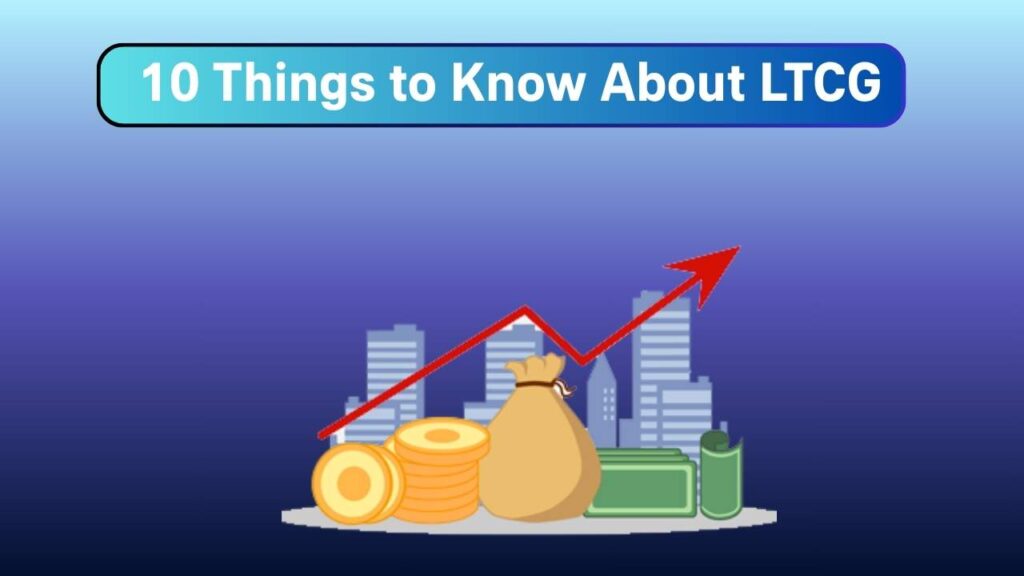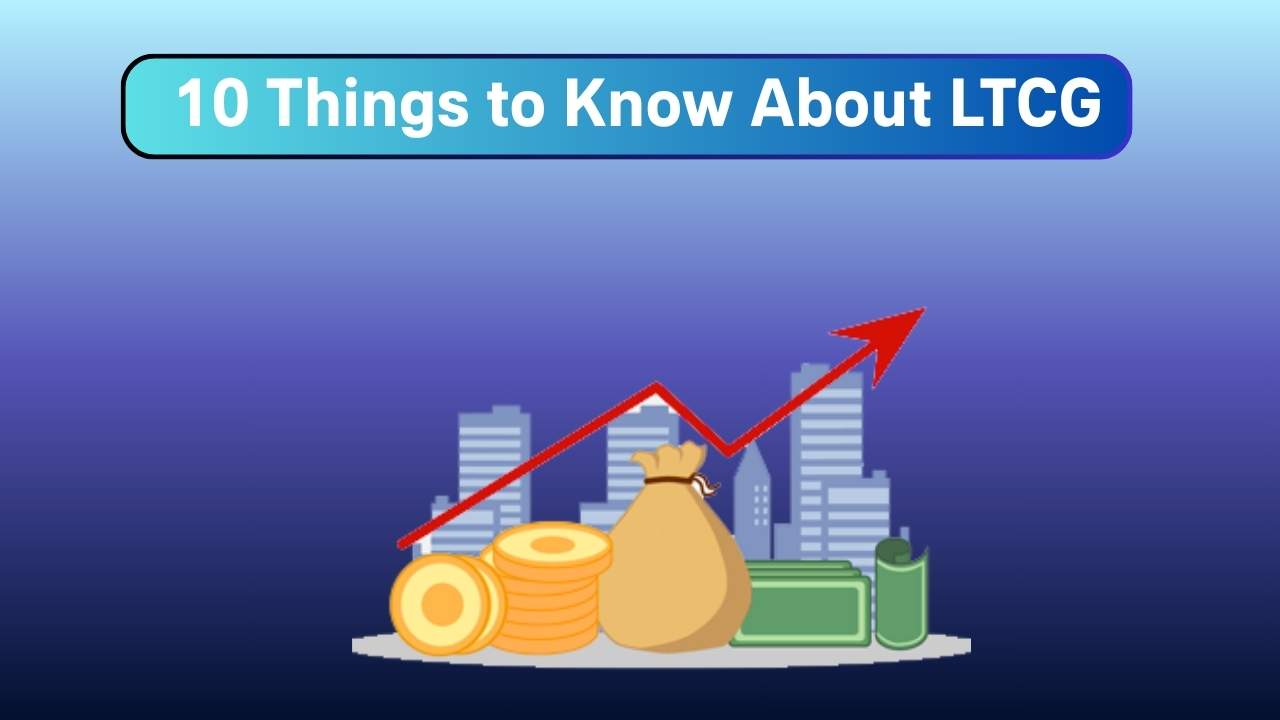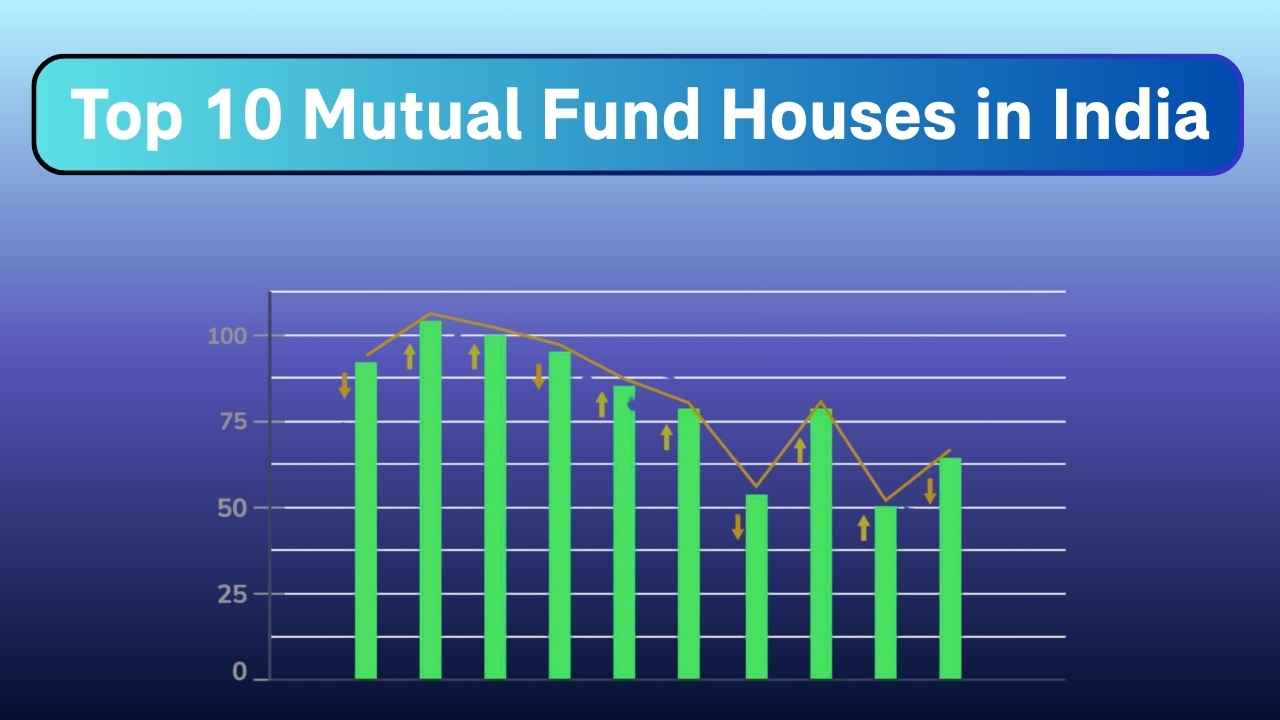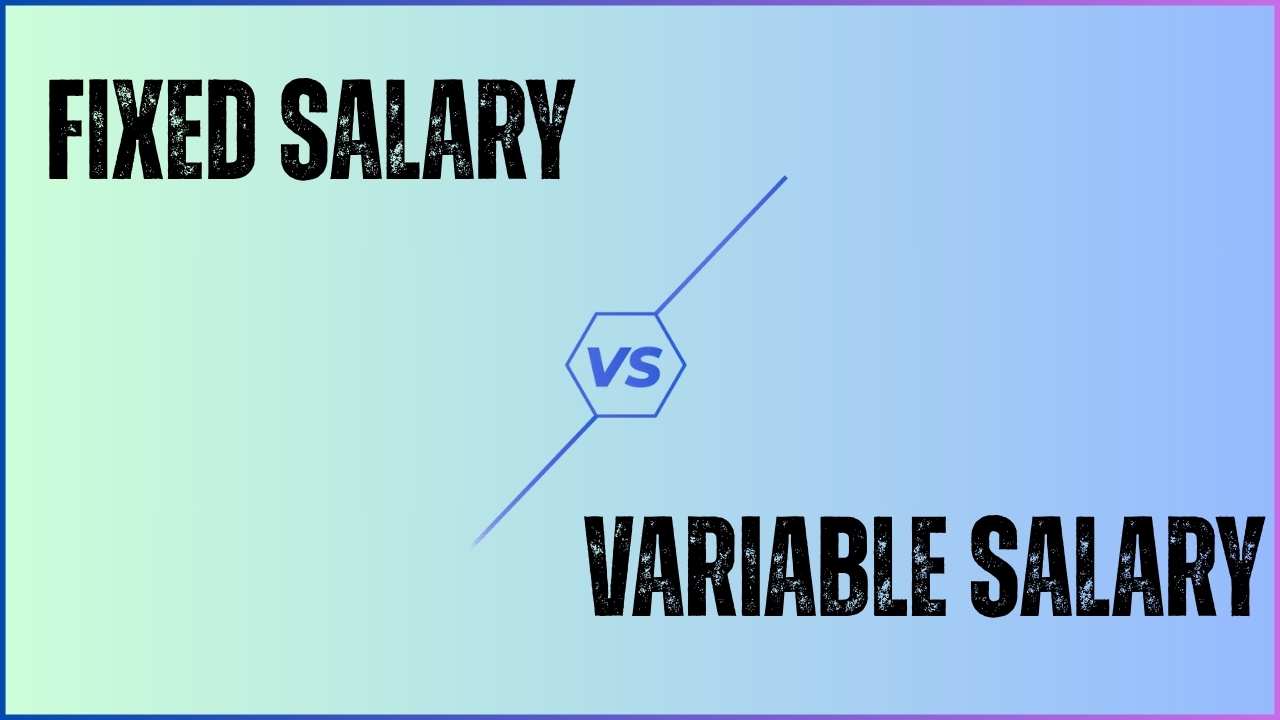Long‑term capital gains (LTCG) receive a lot of attention from investors, since they directly influence how much of your profit you get to keep. If you’re purchasing stocks, property, bonds, or other investments, understanding the rules on LTCG allows you to plan more effectively, pay the correct amount of tax, and accumulate wealth.
In this post, we’ll walk through ten key points about LTCG in simple English. You’ll learn about tax rates, exemptions, holding periods, special rules, and more. By the end, you’ll have a clear picture of how LTCG works in India and how to make it work for you.
What Is Long‑Term Capital Gain?
Long‑term capital gain is the income you gain while selling an asset—like shares, mutual funds, bonds, or real estate—after keeping it for a time greater than what is required by law. For stocks and equity-oriented mutual funds, this is greater than 12 months. For debt funds, it’s greater than 24 months (from 36 months earlier, now reduced in Budget 2024). Even real estate must be kept for greater than 24 months to be considered “long term.”

The difference between long-term and short-term profits is important because LTCG has lesser tax rates and special relief. By deciding the sale date, you can frequently avoid paying thousands or even lakhs of tax. Keeping your assets over the limit not only provides you with time for value appreciation but also opens up tax benefits that make your investments more lucrative.
LTCG Tax Rate After Budget 2024
According to the 2024 Budget, LTCG on listed equities and equity mutual funds is levied at 12.5% (along with applicable surcharge and cess), from 10%. The basic exemption limit has also been raised from ₹1 lakh to ₹1.25 lakh per financial year.
If you make ₹2 lakh of long-term gains in a year, you pay tax on only 12.5% of ₹75 000 (₹2 lakh minus ₹1.25 lakh of exempt amount). This raises your tax bill slightly but also benefits you with a greater exempt limit. It convinces small investors to retain investments for longer periods and enables the government to earn revenue from high-net-worth transactions.
Indexation Benefits Removed (Except Real Estate)
Indexation offsets the purchase price of an asset for inflation, essentially lowering taxable profits. Indexation previously existed for debt funds, bonds, and other types of assets.
After Budget 2024, indexation is no longer permissible on any asset class except for property acquired prior to July 23, 2024. That implies that for debt mutual funds and bonds, all your profit gets taxed without inflation adjustment—at 20% for long‑term debt profit—with limited exceptions.
Without indexation, the tax bill on gains is larger. Suppose you purchased a bond in 2019 for ₹1 lakh and sold it in 2025 for ₹1.5 lakh. You pay tax on the entire ₹50,000 rather than a reduced inflation-adjusted gain. Property owners are unaffected, so real estate still is an efficient tax vehicle for long-term investments.
4. Holding Period Requirements
Equity vs. Debt
- Equity assets (stocks & equity mutual funds): Must be held for more than 12 months.
- Debt assets (debt funds, bonds, NCDs): Must be held for more than 24 months (down from 36).
- Real estate: Must be held for more than 24 months.
Selling a day prior to reaching the long‑term milestone classifies your gain as short‑term, incurring greater tax rates (15% for equity STCG, slab rates for debt/property). Plan accordingly from your holding period calendar and time exits to avail of the reduced LTCG tax.
5. Set‑Off and Carry Forward of Losses
If you sell assets at a loss, you can use those losses to reduce your taxable gains:
- Current year set‑off: Offset long‑term losses against long‑term gains in the same financial year.
- Carry forward: Unused losses can be carried forward for up to 8 years, to offset future long‑term gains.
Limitations
- Long‑term losses cannot be set off against short‑term gains.
- You must report and carry forward losses in your tax return before the due date.
If you have large long-term profit from one asset and losses from another, sell them both in the same year to offset tax. If losses are larger than gains, carry over the excess—this can be a useful bunker in high-growth years.
6. Exemptions Under Sections 54, 54B, 54EC, 54F
Key Exemption Routes
- Section 54: Reinvest gains from the sale of residential property into a new home within specified time limits.
- Section 54B: Exemption on sale of agricultural land, when proceeds are reinvested in new agricultural land.
- Section 54EC: Invest gains (up to ₹50 lakh) in specified bonds (NHAI, REC) within 6 months of sale.
- Section 54F: Similar to Section 54 but for any asset other than a residential home.
These portions allow you to postpone or exempt tax on LTCG—perfect for residential property owners, farmers, and those in search of low-risk bonds. Always verify lock‑in periods and reinvestment dates to be eligible.
7. Grandfathering Rule for Equity Gains
The grandfathering provision exempts gains earned on equity investments until January 31, 2018. Tax applies only to gains earned subsequent to the date (i.e., sale price minus fair market value on January 31, 2018).
If you purchased stock at ₹100 in 2010, and on January 31, 2018 their market value was ₹300, you’re taxed only on gains above ₹300 when you sell, even though you initially paid less. This keeps early investors from suffering retroactive spikes in tax.
8. Tax Loss Harvesting
Tax loss harvesting involves selling underperforming assets at a loss to counterbalance your gains elsewhere. This reduces your total taxable income.
How to Implement
- Identify assets with paper losses.
- Sell them before the financial year ends.
- Use those losses to offset your LTCG.
- Optionally, rebuy similar assets to stay invested, but beware of wash‑sale rules (no formal rule in India, but follow prudence).
Benefits & Cautions
This practice can lower tax bills and free up capital from poor investments. However, frequent trading may increase transaction costs and require diligent record‑keeping.
9. LTCG on Sovereign Gold Bonds (SGB)
Redemption profit on SGBs at maturity are exempt completely under Section 47(viic) for individual investors.
Limits & Who Qualifies
- Applies only to individuals—HUFs, trusts, and companies do not get this benefit.
- Must hold SGBs to maturity (usually 8 years). Early redemptions (after 5th year) are taxable as per your capital gains status.
Beyond safety and small‐cap liquidity, SGBs offer tax‑free gains if you’re patient. This makes them a standout in a diversified portfolio—especially for risk‑averse investors.
10. LTCG on ESOPs and Impact of DDT Removal
Employee Stock Options (ESOPs) are taxed twice:
- At exercise: Difference between market price and exercise price is taxed as per your slab rate (perquisite).
- At sale: If held >24 months, gains are long‑term and taxed at 12.5%.
With the abolition of Dividend Distribution Tax (DDT) in Budget 2020, dividends are taxed in your hands at slab rates. Although this does not directly alter LTCG rules, it means your overall returns on equity (dividends + LTCG) are subjected to more direct personal taxation, hence LTCG planning becomes even more crucial.
10 Things to Know About LTCG: Comparison Table
| Aspect | Key Detail | Section/Rule |
|---|---|---|
| Tax Rate (Equity) | 12.5% on gains above ₹1.25 lakh | Budget 2024 |
| Exemption Threshold | ₹1.25 lakh per year | Budget 2024 |
| Holding Period (Equity) | >12 months | Income Tax Act |
| Holding Period (Debt/Real Estate) | >24 months | Budget 2024 |
| Indexation | Only for real estate pre‑23 Jul 2024 | Budget 2024 |
| Loss Carry Forward | Up to 8 years, only against LTCG | Income Tax Act |
| Grandfathering | Exempts gains till 31 Jan 2018 | Budget 2018 |
| SGB Exemption | Fully exempt on maturity (individuals) | Section 47(viic) |
| ESOP LTCG Holding | >24 months | Income Tax Act |
| Reinvestment Exemptions | Sections 54, 54B, 54EC, 54F | Income Tax Act |
Conclusion
Knowing LTCG rules keeps more of your gains and only pays what you owe. From knowing the qualifying assets and the holding period, to exemptions and loss offsetting, every detail of LTCG planning can increase your net gains.
Always remain aware of Budget amendments, monitor holding periods, and take advice from a tax consultant if you are uncertain. Smart planning makes LTCG a force to be reckoned with in personal finance.
FAQ: 10 Things to Know About LTCG
Q1: What counts as a long‑term asset?
An asset held beyond the threshold—12 months for equity, 24 months for debt and real estate—qualifies as long term.
Q2: Can I avoid LTCG tax entirely?
You can reduce or defer tax by using exemptions (Sections 54/54EC/54F) or reinvesting gains within specified timelines.
Q3: How do I carry forward my losses?
Report long‑term losses in your tax return before the due date. You can then offset them against future long‑term gains for up to eight years.
Q4: Are dividends still a worry?
Yes. With DDT removed, dividends are taxed at your slab rate. This makes LTCG planning more crucial for your overall return.
Q5: Should I consult a financial adviser?
Absolutely. LTCG rules can be complex, and an expert can help you choose the best strategy based on your portfolio and goals.
Disclaimer:
The information presented in this article is for general informational purposes only. It does not constitute financial, investment, or professional advice. Commodity prices and market conditions can change rapidly; before making any investment or trading decisions, you should conduct your own due diligence and consult with a qualified financial advisor or other professional. The author and publisher assume no responsibility for losses or damages resulting from any actions taken based on the content of this post.













